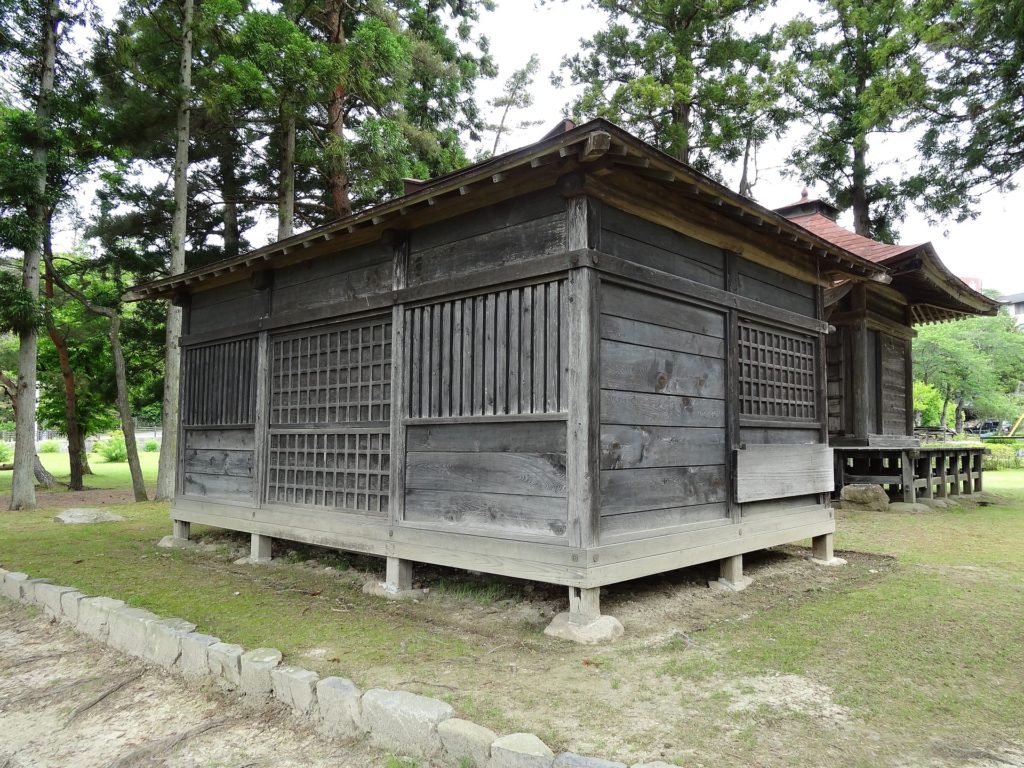Situated on Honshu Island’s eastern coast, up in Japan’s Tohoku region, Iwate is a prefecture rich in historical and cultural attractions. It is made up of several cities and towns, including Hiraizumi, a scenic city that used to be an important government seat in the Tohoku region during the Heian Period (794 to 1185). It also has many well-preserved natural parks and quasi-national parks.
How To Get There
Iwate is accessible by plane, Shinkansen, local trains, and buses.
Hanamaki Airport, also known as Iwate-Hanamaki Airport, is found about six kilometres from central Hanamaki. It serves a number of international flights to and from Taipei via China Airlines and Tigerair Taiwan, and to and from Bangkok via Thai Airways; and domestic flights to and from Nagoya via Fuji Dream Airlines, and to and from Sapporo, Osaka, and Fukuoka via Japan Airlines.
Iwate is made up of several Shinkansen stations along the Tohoku Shinkansen and Akita Shinkansen routes, including stops in Morioka, Hanamaki, Oshu, Iwate Town, Ninohe, Kitakami, and Ichinoseki.
Furthermore, local trains operate in the region, and include the Sanriku Railway, the Yamada Line, the Kitakami Line, the Ofunato Line, the Kamaishi Line, the Hanawa Line, the Tazawako Line, and the Kamaishi Line.
There are also daytime and overnight buses that travel between Iwate and Tokyo and other parts of Japan multiple times a day. You can check for routes, timetables, fares, reservations, and other information on Japan Bus Online.
Top Attractions

Hiraizumi
In the early 12th century, the city of Hiraizumi was designated as the Fujiwara clan’s Northern Branch seat, and it developed into a prosperous political and cultural area that rivalled Japan’s capital city at that time, Kyoto. Today, it offers numerous ancient temples and stunning natural sceneries.
- Geibikei Gorge – The best way to explore the breathtaking beauty of Geibikei Gorge is by doing a flat-bottomed boat tour on the river, through the remarkable rock and cliff formations all around. It is a very popular autumn foliage spot due to the gorgeous views of colourful trees that envelop the gorge. For more information on the tours, visit Geibikei Boat Tours’ official website.
- Chusonji Temple – A 9th century Buddhist temple in the middle of Hiraizumi, Chusonji is a UNESCO World Heritage Site recognized as the Tendai sect’s head temple in the Tohoku region. Its grounds house several buildings, including the main hall and a treasures hall. The temple is about 20 to 30 minutes away on foot from Hiraizumi Station.
- Takkoku no Iwaya – Another 9th century Buddhist temple in Hiraizumi that is a must-see is the Takkoku no Iwaya, which is famous for its unique location. A portion of its structure was constructed under an overhanging cliff, and there is a cave nearby that houses a Bishamon-ten statue.
- Motsuji Temple – With a vast pure land garden with a large central pond, Motsuji Temple is heralded as a Buddhist paradise. It was completed in mid-9th century, and is made up of the main hall, a lecture hall, a main gate, a bell tower, and others. It is located about 10 minutes away on foot from Hiraizumi Station.
Morioka
Iwate Prefecture’s capital city, Morioka has an abundance of natural sights and attractions, only about two and a half hours away by Shinkansen from Tokyo. It also offers some of the best tasting cuisine in the region, such as noodle dishes like wanko soba, reimen, and jajamen, and a rice cracker called Nambu Senbei.
- Morioka Hachiman Shrine – Known for its annual festival held every second Saturday of June, the Morioka Hachiman Shrine was founded in mid-11th century to honour Shinto deity Hachiman.
- Hoon-ji Temple – Constructed in the late 14th century, Hoon-ji is a Buddhist temple of the Soto Zen sect, notable for its Rushana butsu statue and 500 Rakan statues.
- Mitsuishi Shrine – Mitsuishi Shrine is a Shinto shrine characterized by three huge rocks standing on its grounds, with shackles around them. According to a legend, a demon that frequently caused chaos in the locale was finally captured after the people prayed to Mitsuishi. It was chained up to the rocks, and it left its handprint on one of these rocks, resulting to the name Iwate, which literally translates to “rock hand.”
Sanriku Coast
Extending more than 200 kilometres along Tohoku region’s Pacific coastline, Sanriku Coast is a breathtaking attraction made up of cliffs, coves, beaches, bays, and many other natural formations.
In 2011, it, along with several other towns by the coast, was severely damaged by a tsunami triggered by the Great East Japan Earthquake. Today, reconstruction efforts are ongoing, but it still sees a significant volume of tourists all year round.
More information is available on Sanriku Fukko National Park’s official website.
Tono
Dubbed as “The City of Folklore”, Tono is a city located in the rural part of Iwate, surrounded by hills and farms. Its rich and interesting history of folklore and legends about supernatural creatures and spirits dates back to many centuries ago.
Moreover, it is home to numerous traditional farmhouses with thatched roofs, such as the Chiba Residence; folk villages, like the Denshoen, Furusato Village, and Takamuro Suikoen Park; and folklore and mythical sites, such as the Fukusenji Temple, Tsuzukiishi Stone, Gohyaku Rakan, and Kappabuchi Pond.
The Tono Tourism Association website has information on the different tourist spots around town.
Appi Kogen Ski Resort
Regarded as one of Tohoku region’s best ski resorts, the Appi Kogen Ski Resort sits on the Appi Highlands, with a variety of facilities for skiing, sledding, snowboarding, and other snow activities. There is also a hotel, and gender-separated outdoor and indoor baths at the base of the resort.
Open from early December until early May around Golden Week each year, the resort also offers snowboarding and skiing lessons for beginners, a family park, and a shuttle bus service to get around the area.
Tickets, access, and other information are found on Appi Kogen Ski Resorts official website.
Getting Around
Travelling between cities and towns in Iwate is done by trains and buses.
The Iwate Prefecture Tourism Site offers information on train and bus routes to and from the area’s major cities and rural spots.
Weather
Iwate enjoys mild weather throughout the year. In the summer, daily temperatures are in the low 20s Celsius, and rainy days are frequent from June to September. In autumn, the temperature starts to dip to around 10 to 15 degrees, and in winter, it is very common to have below 0 degree days and heavy snowfall. In spring, the weather becomes milder, with daily temperatures between 5 and 15 degrees, and fewer rainy days.
